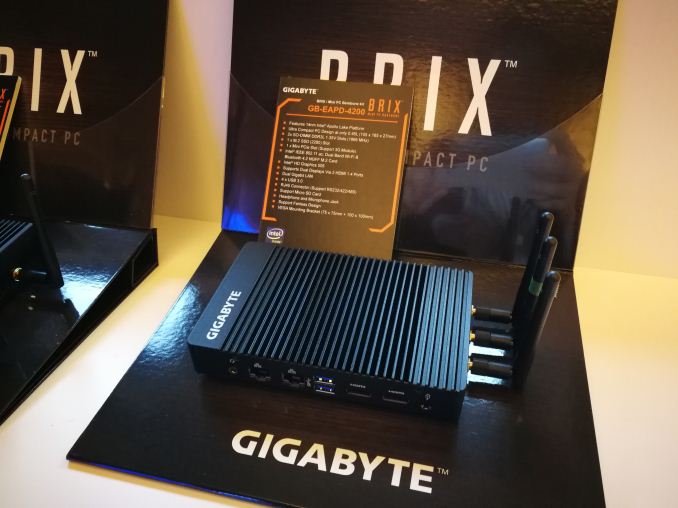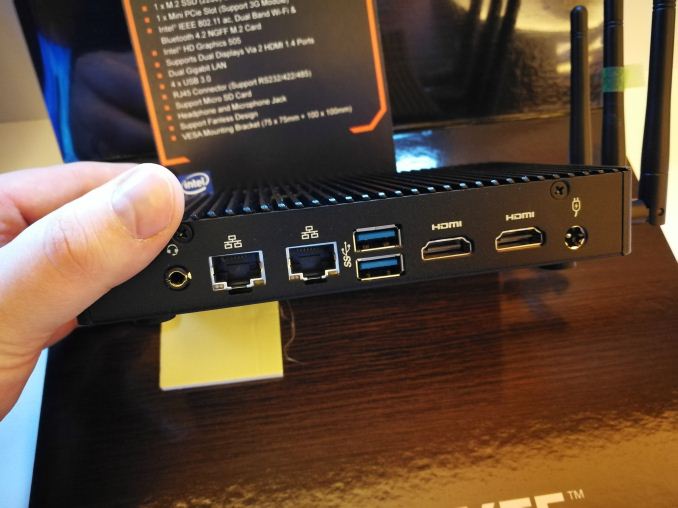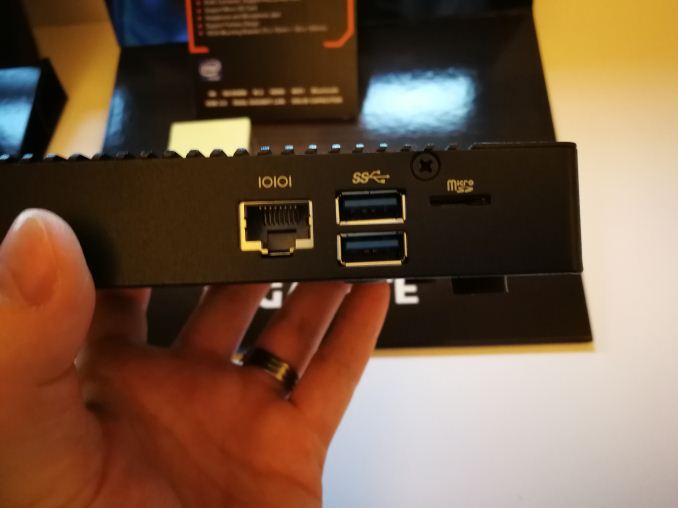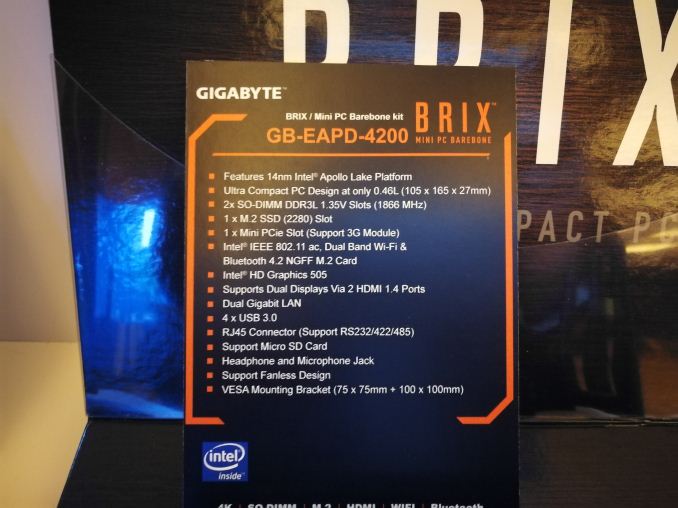CES 2017: GIGABYTE Shows Passive Apollo Lake BRIX in Embedded UCFF
by Ian Cutress on January 11, 2017 5:00 PM EST
Despite the candid approach that Intel has had to its Apollo Lake platform, we are now starting to see fully developed platforms coming out to play from the major vendors. (I personally have some APL motherboards for desktops in for testing sometime during Q1 as well.) One of these platforms was GIGABYTE’s embedded BRIX line, more focused at commercial deployments than consumer, but interesting nonetheless.
The main unit we saw was this: the GB-EAPD-4200 BRIX. Using an Apollo Lake SoC, it looks to be in a passive case and sports three WiFi antenna. The chassis is 0.46L, with support for 2x DDR3L-1866 SO-DIMM memory modules, one M.2 (2280) SSD slot and a mini-PCIe slot for a 3G WLAN module. The WLAN accounts for one antenna, and the other two come via an Intel 802.11ac card inside, most likely the 8265 or 8260 depending on how GBT’s design cycle was in play. Using Apollo Lake means getting HD Graphics 505, although given this system it is more than adequate for video playback or casual office use.
This unit has plenty of IO to keep the buyer satisfied – dual gigabit network ports, dual HDMI 1.4 display ports, four USB 3.0 ports and support for a microSD card. VESA support for 75mm and 100mm brackets is included.\
This unit is to be sold as a barebones kit, requiring DRAM and storage, most likely for system integrators to add their own hardware solutions depending on how local customers will want them configured (small DRAM counts and low storage, or something more robust). Interested parties will need to contact their local distribution partners for more information.

















15 Comments
View All Comments
Eletriarnation - Thursday, January 12, 2017 - link
Atom's a perfectly good proc for the TDP and price. Plenty fast for a basic NAS, torrent box, home firewall, etc.jimf28 - Thursday, January 12, 2017 - link
I thought the new Apollo Lake chips were going to support HDMI 2.0, Is this correct?alyarb - Thursday, January 12, 2017 - link
To answer your question it's probably i219-V, but I still don't get why people think that just about any box with 2 NICs will be a "great" pfSense. you guys know that most consumer atoms don't have AES-NI right? hopefully more 14nm parts will change that, but for all these reasons they partnered with Netgate and went into the hardware business themselves.If you like pfSense that much, you should actually give their stuff a chance.
Namisecond - Tuesday, January 17, 2017 - link
I don't think Hardware AES-NI acceleration is a critical necessity for a pfsense box, especially for a (advanced?) home user. Sure, it's nice to have, but unless you're running all your network traffic through encrypted VPN tunnels, it will be severely underutilized. For business/enterprise...you're more likely to look at Cisco than building your own, or getting a premade network appliance that has AES-NI acceleration baked in.Namisecond - Monday, April 10, 2017 - link
Most vendors state the make and model of the NICs if they're Intel. They tend to list "Gigabit ethernet" when it's Realtek. AES-NI doesn't matter as much in the consumer space. The ones it actually matters to, know what to buy, and for the ones that it REALLY matters to tend to buy commercial gear, like Cisco.